Until September, the Design Museum in London hosts an exhibition which is in one way ironic, considering how much the artist it focuses upon coveted his privacy, but an absolute dream to anybody who appreciates his oeuvre.
They don’t seem to make filmmakers like Stanley Kubrick anymore. Sure, there are masters creating signature work in cinema today, such as Paul Thomas Anderson and Alejandro G. Iñárritu, but there remains only a very few whose name and work has transcended moving pictures to enter the general consciousness. With cinema’s place as an art form having shifted considerably with the evolution of media and the coming of the internet, it’s unlikely we’ll witness the rise of such an influential film director again.
Producer Jan Harlan introduces Stanley Kubrick: The Exhibition
Kubrick died suddenly in 1999, not only on the cusp of releasing his long-anticipated Eyes Wide Shut, but also just as the digital world was beginning to blossom. The first thing you realise when digesting his archive is that he was an analog man of the twentieth century, and an early adopter of the twenty first. The mind boggles at the thought of what his unrealised science fiction project A.I. (his friend, Steven Spielberg, ultimately did his own take on the material) would have looked like had he been still working today, with vast mature digital technology at his fingertips.
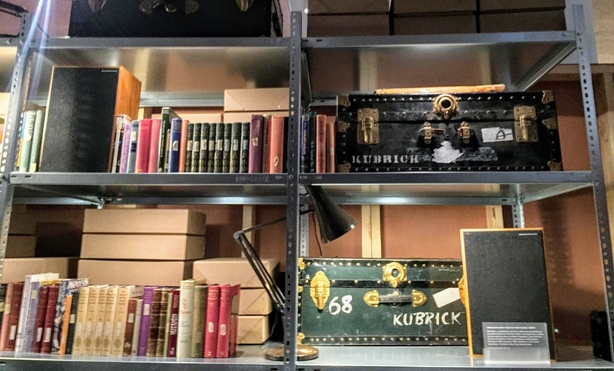
Despite producing most of his work in the pre-computer age, there aren’t as many props and set pieces still in existence for us to analyse as you would imagine. As Kubrick didn’t want them to be re-used in other studio films he made sure many were destroyed. Most that do survive are from his later works, but there are amazing props we’re still lucky to have from 2001: A Space Odyssey, such as Bowman’s distinctive red space helmet, the Moonwatcher monkey costume (which looks even more convincing viewed close-up) and a panel from the groundbreaking centrifugal Jupiter spacecraft set.
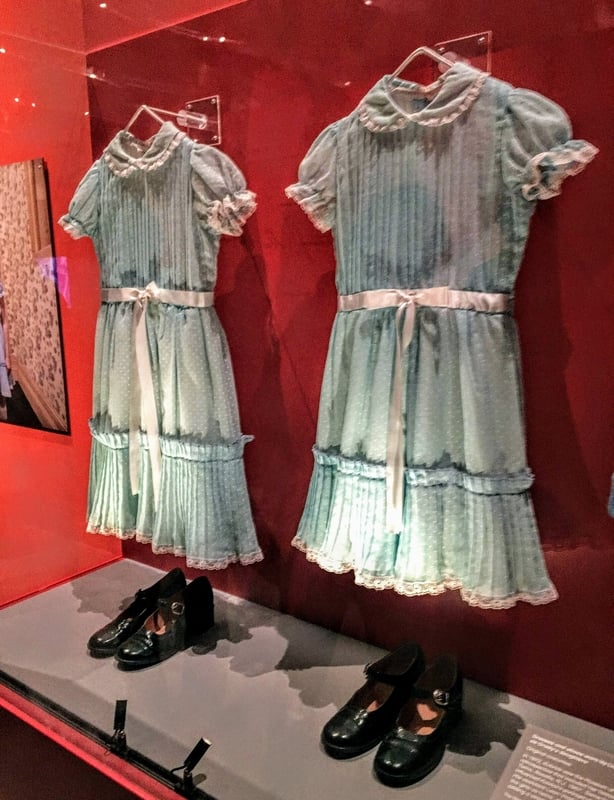
You are also able to ogle the twins’ costumes from The Shining, which somehow look even more disturbing without the actors wearing them. You’ll also find Jack Nicholson’s iconic axe, Shelley Duvall’s kitchen knife and Matthew Modine’s helmet from Full Metal Jacket.
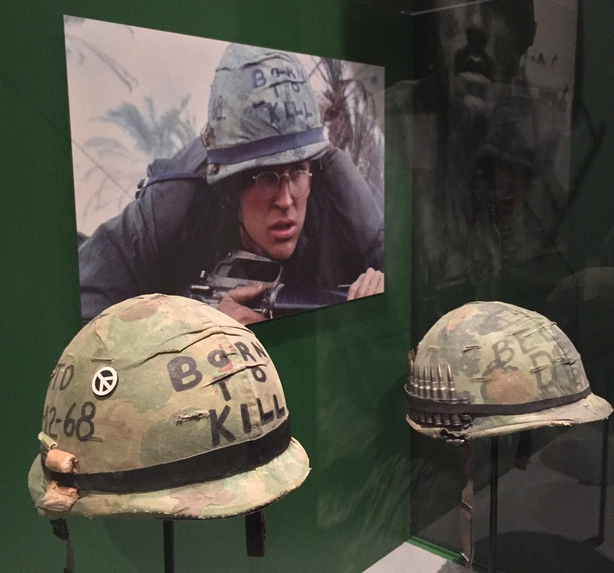
Predominantly, however, it’s the man himself and his work ethic on display. His research archive is vast. Kubrick borrowed, bought and consumed book after book. We are talking decades before word processors, so his notes are all written down, by hand, on note cards and stored alphabetically in custom built wooden record cabinets. A wily producer as well as a great director, the man was not a renter - he bought his own camera equipment and used it from picture to picture to keep costs down.
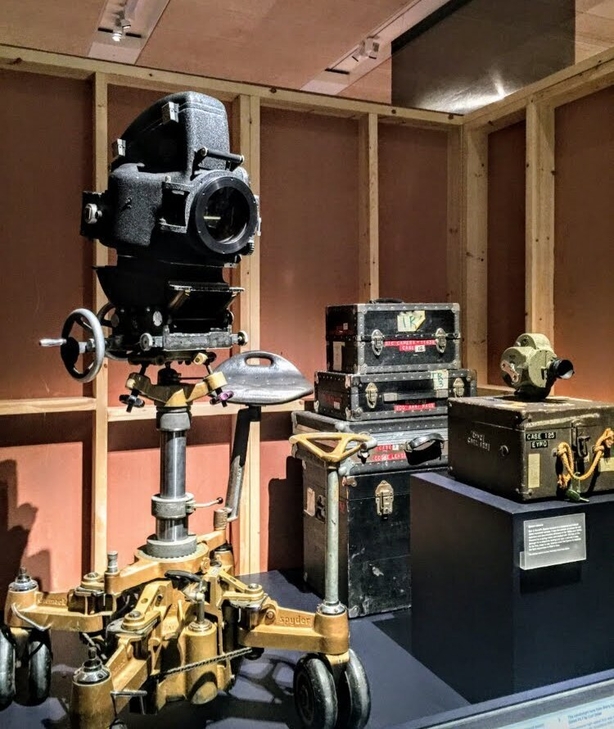
And since he always operated on the edge of technology he had the most advanced stuff, often especially designed for him. This includes the legendary Kubrick boxes, in which he stored his personal archive. The manufacturer of the boxes now makes these for general sale and named the design after the director.
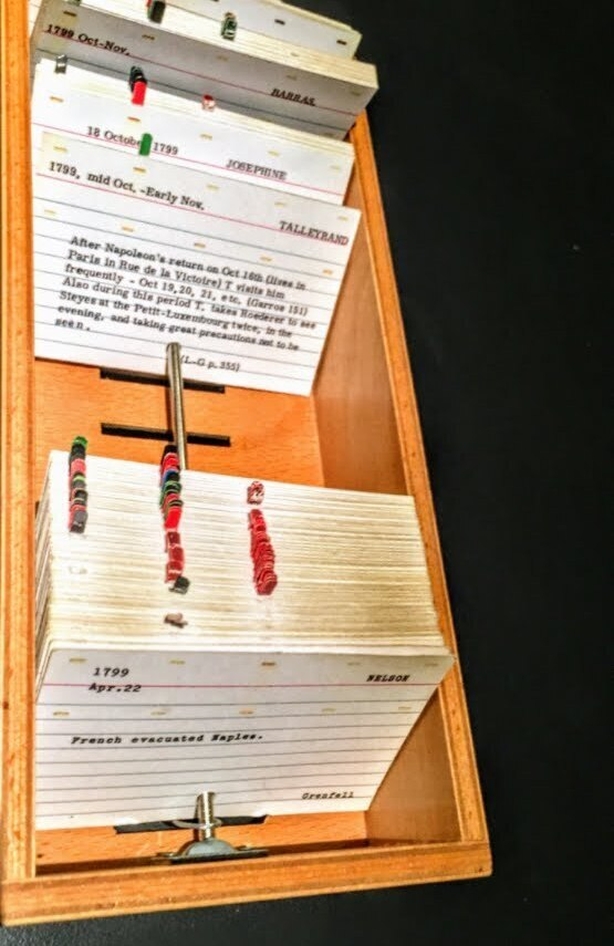
It’s difficult to pick a favourite amongst his stash. I was gobsmacked at the detailed shooting schedules - set by set and country by country - for films he never even made, such as his legendary Napoleon with Jack Nicholson penciled in for the titular role, and The Aryan Papers, his story of the Holocaust, which he ultimately abandoned after the research took its toll on him. But perhaps it’s the sheer volume of printed matter, letters, notes, correspondence, each a sliver of light on the methods and personality of the artist in his element. I’m just a John Q. scribbler and I can’t even remember when I last wrote a letter. That age has passed. Directors archives of the near future will likely be a single hard drive the size of just one of Kubrick’s many books on the life of Napoleon.

It may all be behind glass and untouchable to the fingertips, but in this era where ‘fake’ has risen to new status and digital has often rendered extinct the soul of what we consume, the films of Stanley Kubrick’s were, are and will forever be the real deal.
Stanley Kubrick: The Exhibition is at the Design Museum, London, until September 15th, 2019 - more info here.


